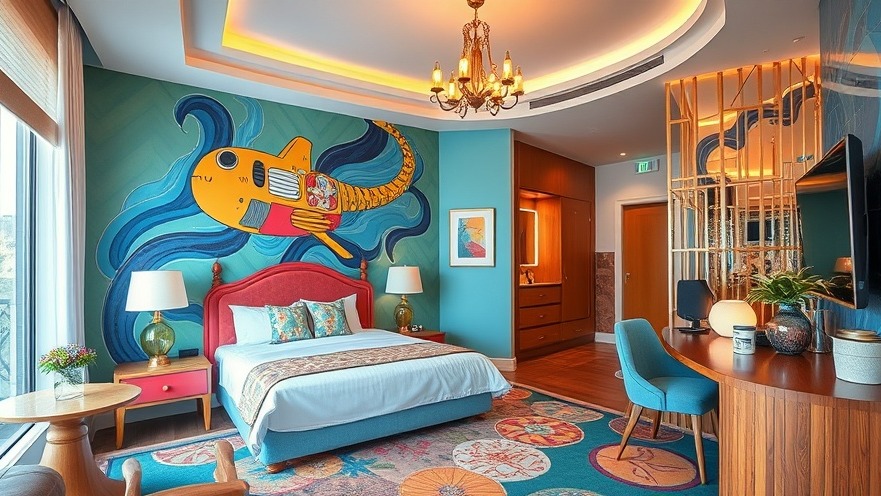
Revamping Spaces: The New Look of Wild Palms Hotel
In Sunnyvale, California, a charming vintage hotel has received a much-anticipated facelift thanks to the innovative minds at BHDM, a New York-based design studio. Renowned for their ability to reinvigorate traditional settings into modern, functional spaces, BHDM embraced the hotel’s retro charm while incorporating a vibrant palette inspired by the Californian sunshine. This transformation not only aims to elevate guest experiences but also acknowledges the growing trend of blending work and leisure environments, which is becoming increasingly important for today’s digital nomads.
Creating Seamless Indoor-Outdoor Experiences
One of the significant changes implemented at the Wild Palms Hotel includes enhancing the flow between the indoor lobby area and the outdoor poolside. Guests are now greeted by a bright, open layout that allows for unhindered views of the pool right upon their arrival. The decor choices, which feature citrus-colored furniture and a stunning ceiling installation of colorful circles, reflect a playful yet relaxing environment that caters to remote workers who may seek both productivity and leisure during their stays.
The Power of Color and Design in Workspaces
For digital nomads, an aesthetically pleasing and functional workspace is crucial. BHDM’s design leverages the psychological impact of color to create a conducive working atmosphere. The citrus and sky-blue shades not only provide a sense of calmness but also stimulate creativity. Additionally, the versatile breakfast room doubles as a workspace equipped with comfortable seating and electrical outlets, allowing guests to transition seamlessly between eating, socializing, and working.
Flexible Spaces for Modern Living
The hotel design prioritizes flexibility, catering to various needs throughout the day. With various seating arrangements and distinct communal areas, the space encourages collaboration and interaction among guests, which is essential for building social connections while traveling. The installation of electrical sockets in banquettes highlights the awareness of modern work habits, making it easier for remote workers to stay productive without sacrificing comfort.
Cultural Reflections in Design Choices
BHDM drew upon the hotel's mid-century origins to craft an ambiance that feels both nostalgic and innovative. From the striped motifs to tropical-themed decor, the design celebrates California's vibrant culture. For remote workers, this cultural immersion enhances their travel experience, allowing for both work and play in a setting that inspires productivity. The motivation behind these choices is rooted in the belief that the environment profoundly affects one’s ability to focus, innovate, and recharge.
Embracing the Vintage Aesthetic with Modern Comforts
The renovations at Wild Palms reflect a broader trend in hospitality towards vintage-inspired modernism. By keeping the charm of the original architecture while integrating contemporary comforts, BHDM has successfully created a space that meets the needs of today's traveler. This hotel experience exemplifies how thoughtful design can maximize both leisure and work efficiency, ensuring guests feel at home whether they are on vacation or a business trip.
As more professionals embrace remote work, hotels like Wild Palms serve as models for how to create comfortable and efficient workspaces. By focusing on both aesthetics and functionality, BHDM offers a quintessential blend of relaxation and productivity that resonates with the contemporary traveler.
Considering a stay at a hotel that accommodates modern work-life balance? The Wild Palms Hotel presents an intriguing option for your next trip, enabling you to stay productive while enjoying the vibrant California atmosphere.
 Add Row
Add Row  Add
Add 




Write A Comment